#global performance management process
Text
#The Future of Performance Reviews#performance management trends 2024#latest performance management trends#new performance management trends#employee performance management trends#performance management trend analysis#trends in performance management and feedback#current issues and trends in performance management#performance management current trends#changing trends in performance management#emerging trends in performance management#performance management future trends#global performance management process#hr trends performance management#top trends in performance management#key trends of performance management#latest trends in performance management system#performance management new trends#performance appraisal new trends#trends of performance management#2024 performance management trends#hrprocess#humanresourcemanagement#humanresource#hr#hrm#future of work
0 notes
Text
How to manage change and adapt strategy in a dynamic environment
Change Management : A Framework for Organizational Success
When a crisis hits, we have a choice: we can either react with fear and panic, or we can respond with courage and purpose. As leaders, we have the responsibility to inspire our teams to embrace the challenge and see the opportunity for growth and innovation. Change is not something we should resist, but something we should welcome as a…

View On WordPress
#Agile#Agile Strategy#Agility#Change#Change Management#Dynamic Environment#Global Performance#Industrial performance#Lean management#Management#Performance#Process#Process optimization#Strategy#Team#Team cohesion#Team performance#Team spirit#Trust#Volatile World#Waste Elimination#Waste Hunting
0 notes
Text
Instead of burning fossil fuels to reach the temperatures needed to smelt steel and cook cement, scientists in Switzerland want to use heat from the sun. The proof-of-concept study uses synthetic quartz to trap solar energy at temperatures over 1,000°C (1,832°F), demonstrating the method’s potential role in providing clean energy for carbon-intensive industries. A paper on the research was published on May 15 in the journal Device.[...]
Glass, steel, cement, and ceramics are at the very heart of modern civilization, essential for building everything from car engines to skyscrapers. However, manufacturing these materials demands temperatures over 1,000°C and relies heavily on burning fossil fuels for heat. These industries account for about 25% of global energy consumption. Researchers have explored a clean-energy alternative using solar receivers, which concentrate and build heat with thousands of sun-tracking mirrors. However, this technology has difficulties transferring solar energy efficiently above 1,000°C.
To boost the efficiency of solar receivers, Casati turned to semitransparent materials such as quartz, which can trap sunlight—a phenomenon called the thermal-trap effect. The team crafted a thermal-trapping device by attaching a synthetic quartz rod to an opaque silicon disk as an energy absorber. When they exposed the device to an energy flux equivalent to the light coming from 136 suns, the absorber plate reached 1,050°C (1,922°F), whereas the other end of the quartz rod remained at 600°C (1,112°F).
“Previous research has only managed to demonstrate the thermal-trap effect up to 170°C (338°F),” says Casati. “Our research showed that solar thermal trapping works not just at low temperatures, but well above 1,000°C. This is crucial to show its potential for real-world industrial applications.”
Using a heat transfer model, the team also simulated the quartz’s thermal-trapping efficiency under different conditions. The model showed that thermal trapping achieves the target temperature at lower concentrations with the same performance, or at higher thermal efficiency for equal concentration. For example, a state-of-the-art (unshielded) receiver has an efficiency of 40% at 1,200°C, with a concentration of 500 suns. The receiver shielded with 300 mm of quartz achieves 70% efficiency at the same temperature and concentration. The unshielded receiver requires at least 1,000 suns of concentration for comparable performance.
17 May 24
911 notes
·
View notes
Text
#Proexcellency Provides Oracle Fusion SCM Online Training.#Oracle Fusion Supply Chain Management is a cloud-based product developed by Oracle. It is used in managing supply and demand. It also manag#demand#and material requirements. It combines business processes taking into account the changing needs of the supply chain of modern enterprises.#with maximum flexibility and low risk. The key elements related to Oracle Fusion cloud SCM are manufacturing#inventory#cost management#order management#planning#global order promising#pricing#shipping execution#and product management.#The new updates of Oracle fusion cloud SCM are:#Production Scheduling: It increases the factory output by utilizing the resources for different industries. It also helps customers manage#real-time work order sync with Oracle Manufacturing#and real-time analytics for monitoring the schedule performance.#IoT Production Monitoring and asset monitoring: This feature allows the customers to monitor the characteristics of their resources or asse#Procurement Capabilities: Improve and simplify the process of obtaining goods and services with pre-bidding auction capabilities#which helps the suppliers to prepare better for negotiation#mastering the contract variables for improving contract information accuracy and the powers of expanded purchase order distribution#which will help the customers to collaborate more effectively.#Order Management Capabilities: This feature was added to improve the user experience and productivity for order management. It also enables#Lot split#Merge#Translate services: These services allow customers to divide lots into small units#then merge these small lots into a big lot and translate or move them using REST and FBDI (file-based data import) to meet the requirements#Maintenance Work requests by Oracle Help desk: This feature improves the responsiveness and improves the maintenance of assets by allowing#Qualify goods for Agreements related to trades: It delivers increased competitiveness and enhanced margins. Using this feature#the users can qualify the products to global trade agreements for supporting process internal transfer orders and customer sales orders.
0 notes
Text
“I started to become interested in Britney Spears’ journey around four years ago, when I noticed that she always looked disconnected in social media videos and photographs. Her communication seemed odd. Her eye contact and body language weren’t right, and I had commented that she was extremely traumatised, but likely to be taking medication of some sort. I wondered whether she, like many of the women and girls I was working with, was being subjected to the same process of pathologisation and control.
In 2019, one of the attorneys in the conservatorship case claimed that Britney was so mentally ill that she was like ‘a comatose patient’ and that she couldn’t make any decisions or sign any statements because she was the equivalent of an unconscious person. I started to feel that my worries were being confirmed. How could she simultaneously be so lacking in capacity that she was the equivalent of a person in a coma, and also be performing at a residency in Las Vegas every single night? How could people around her be claiming that she was so mentally ill that she needed round-the-clock supervision and medication, but she was still well enough to perform for hours? Something wasn’t right.
The world has watched whilst Britney Spears rose to fame dressed in ‘sexy schoolgirl’ uniform dancing in a school gym, singing ‘hit me baby, one more time’. They watched as she became a global phenomenon and sex symbol. They laughed as she was chased endlessly by the press. As she struggled to cope. As she shaved her head. As she struggled to keep custody of her children. As she was sectioned and medicated. As she was forced to perform in Las Vegas whilst being regularly medicated to control and subdue her. As she was locked into a conservatorship for thirteen years by her abusive father.
Prior to her solo artist career, she had been a famous child star of Disney’s The Mickey Mouse Club along with Ryan Gosling, Justin Timberlake and Christina Aguilera. She regularly performed songs and dance routines and acted. At fifteen years old, she signed a record deal. I was eight years old when ‘Hit me baby, one more time’ came out. I watched it on the TV and didn’t know she was just a child until much later, when I was an adult working in child sexual exploitation services. I looked back on the video and wondered how old she was when they sexualised her and sold her to the world. I did a quick Google search. Sixteen. I thought about her song titles and music videos. ‘I’m a Slave 4 U’ was curiously released on the same album as ‘Not a Girl, Not Yet a Woman’ when she was eighteen years old. Interestingly, both produced by Pharrell Williams, the producer of ‘Blurred Lines’ with Robin Thicke – widely considered to be a misogynistic, pro-rape song about objectifying women. In ‘I’m a Slave 4 U’ and ‘Boys’ (again on the same album), she is positioned as a sex-crazed woman who will do anything for men. Yet ‘Not a Girl, Not Yet a Woman’ positions her as a child, coming of age, and being stuck in between childhood and adulthood.
Between 1998 and 2001, her management released an incredible number of songs and music videos that clearly portrayed her as sexy, sultry and out of reach. Sometimes, I wonder how much of that was deliberately paedophilic and illegal. The ‘jailbait’ trope. That men knew she was a child, but she was being positioned as a sexual adult. This included being interviewed several times about whether she was a virgin, when she lost her virginity, and whether she had a boyfriend yet.
My next strongest memory of Britney was in 2003, when she released ‘Everytime’. The video was harrowing. I was thirteen years old, and even I noticed that something was very wrong. She was singing about pain and trauma. The music video featured her dying of an overdose in the bath and drowning. I watched it with horror. She wanted to die. Her portrayal of suicide was calm, peaceful and final. She is shown as having an out-of-body experience in which she sees herself being pulled out of the bath by a man and rushed to hospital, whilst paparazzi scramble to take pictures of her body. This video still haunts me; in fact, it hurts more to watch now than it did then. Here was a very young woman, shot into global stardom, sexualised and sold as a teenage sex object, struggling to cope with the pressure, and now depicting her own death. In 2008, her mother Lynne told the press that her daughter had ‘lost her virginity’ to an eighteen-year-old man when she was just fourteen years old, and way below the age of consent. She had started drinking at thirteen years old whilst working on The Mickey Mouse Club, and had started taking drugs at fifteen years old. In her memoir, Lynne recalls finding cocaine and weed in her daughter’s bag as she was boarding a private jet around the time ‘Baby One More Time’ was released.
In 2007 Britney was filmed having a ‘public breakdown’ and shaving her hair off. A month later, after being hounded by tipped-off paparazzi, she hit a car with an umbrella. This led to global media outlets framing her as violent, psychotic, insane and a bad mother to her children. Despite everything she was going through, and previously being regarded as a national treasure, she was framed as dangerous and disordered. She was then reportedly in and out of ‘rehab’ for years, sectioned several times and placed on psychiatric medication. At the end of 2007, her father, Jamie, placed Britney under a ‘temporary conservatorship’ which lasted over thirteen years. During this time, concerns slowly mounted amongst her loyal fanbase, who believed for years that she was being exploited and controlled. They argued that she was in danger, and being treated like a prisoner. They pointed to evidence on her social media which suggested that she was trying to carefully get messages to her fanbase that she was in danger. In 2009, they created a FreeBritney website, and demanded that her conservatorship was ended. In November 2021, Britney filmed and posted a video to her fan base, and specifically thanked the FreeBritney movement for ‘saving her life’, and ‘noticing that something was wrong’.
As the years have passed, I’ve watched as rising child stars such as Miley Cyrus, Selena Gomez, Ariana Grande, Demi Lovato and Lindsay Lohan were taken down similar pathways of hypersexualisation and then pathologisation that were publicly discussed, but for some reason, not publicly scrutinised. Well, the girls were scrutinised, of course. Not so much scrutiny was afforded to the managers and corporations who had clearly developed a blueprint for transforming their cute child stars into pornified sex objects overnight. Sometimes it felt like they had deliberately removed their successful female child stars from the limelight for short periods of time and then relaunched them as sex siren pop stars – when they were barely seventeen years old.
Miley Cyrus became famous for her starring role in Hannah Montana, in which she played a young famous popstar who has to disguise herself to enable her to live a normal life. However, by the age of fifteen, she was relaunched from actor to solo artist. Her songs were carefully constructed to be sexy, but almost acceptable – a teenager singing about her relationships or her crushes. In 2010, at seventeen years old, her management released ‘Can’t Be Tamed’, a song which describes her as crazy, sexy, wild, damaged, jagged and uncontrollable. In the video, she is dressed as a wild, exotic, sexy animal in a large cage, that rich people have paid to see. She becomes uncontrollable and difficult to tame, the rich people become frightened of her, and so the video is designed to position her as sexy, but out of control. Her clothing is ripped and shredded. Her makeup is dark. Her hair is wild.
It is vital to remember that she is not only a child at this point, but is still starring in a Disney children’s programme with a viewership of millions of small children. It is therefore interesting that some critics have speculated that this could be a deliberate process that Disney use to move their young audience towards their pop stars as they age with them. This journey towards sexy, but ultimately, mentally ill, continues for years in her career. By 2013, her music videos regularly showed her almost naked, taking drugs, and being encouraged to be as sexualised as possible. Huge smash hits such as ‘We Can’t Stop’ and ‘Wrecking Ball’ deliberately portrayed her as sexy, but disordered. Naked, but crying into the camera. Beautiful, but aggressive. Laughing but angry. Intoxicated. Exhausted. Messy. Wild. Uncontrollable. Sexy. I also have to wonder what the significance is of Miley crying into the camera with a shaved head in ‘Wrecking Ball’. Why, and how, was she positioned as sexy but psycho? In 2019, tabloids reported that Miley’s family were considering having her sectioned, in order to save her marriage to Liam Hemsworth. A source told the NW that ‘it was clear she was back in a dark place, and her family are telling her to face up to her demons and seek psychiatric treatment before it’s too late. If it saves her marriage, it will be a small price to pay.’ This is particularly distressing to read, considering that around that time she had come out as bisexual, and less than a year later, she came out as lesbian, and was in a relationship with a woman.
Selena Gomez recently announced that she had been diagnosed with bipolar disorder, anxiety and depression having been put through the same process of sexualisation and framing as sexy, but psycho. Again, after being sent to a psychiatric hospital, she was told she was mentally ill.
In 2011, after yet another career which took her from Disney child star to sex object popstar in a matter of months, an eighteen-year-old Demi Lovato was ‘sent to rehab’ and diagnosed with bipolar disorder. She quickly became the poster child for many mental health organisations looking to ‘raise awareness’ of bipolar disorder. In 2018, she took a near fatal overdose. However, she gave an interesting interview in 2020, in which she stated that she had been misdiagnosed with bipolar disorder, and that it seemed easier for doctors to slap a label on her anger and behaviour and tell her it was bipolar disorder. In her own words, ‘bipolar was used as a convenient excuse’ for what was really happening. Similarly to Miley Cyrus, Demi gave an interview in 2021 in which she said ‘I hooked up with a girl and was like, “I like this a lot more.” It felt right.’ She went on to say, ‘I know who I am and what I am, but I’m just waiting until a specific time to come out.’ Demi said that she would feel a ‘visceral reaction to being intimate with men’, and ‘blamed herself for ignoring red flags that she was not heterosexual’. This strikes me as important, that young girls and women who might not even be heterosexual were having their young female bodies exploited, sexualised and moulded for the male gaze by multimilliondollar corporations – causing serious psychological trauma that would later be diagnosed in terms of psychiatric disorders.
Ariana Grande was quickly sexualised as a young teenage girl, and then put through the exact same process as the others. She has spoken publicly about her depression and anxiety, and says that since the terrorist bombing of her Manchester concert in 2017, she hates performing. What is interesting about Ariana’s experiences is that rather than being labelled as bipolar or psychotic like the others, the public sympathised with her trauma from the terrorist attack, and see that as a real, tangible trauma. Instead, then, she was diagnosed with PTSD and her loyal fanbase promised to support her, even if she cancelled her tour dates.
Lindsay Lohan, on the other hand, was bullied for years for her public ‘breakdown’ and drug dependency, despite disclosing domestic abuse and other traumas related to child stardom, sexualisation and pathologisation. Lindsay was diagnosed with ADHD after ‘erratic behaviour’, which UCLA have argued is a misdiagnosis, leading her to be treated with Adderall. This drug is known to have similar effects to cocaine and amphetamines. However, she was also diagnosed with bipolar and alcohol dependency, which led to her living for several years on a cocktail of Dilaudid, Ambien, Adderall, Zoloft, Trazadone and Nexium. When she was twenty-four, doctors who felt she had been misdiagnosed helped to wean her off these drugs using careful tapering methods until she was completely medication-free. Her story – of yet more abuse, trauma and pathologisation – is a sobering read. A young child star who was struggling was diagnosed with several psychiatric disorders she never had, medicated for years and then publicly mocked and criticised as crazy and promiscuous: a hot mess.
Whilst I have focused on Disney stars here, it would be wholly inaccurate to state that this journey is limited to their franchise. All of them struggled with their traumas, stress, abuse or pressure of some kind. All of them were, at some point, positioned as wild, out of control, mentally ill, problematic or attention seeking. Instead of a humanistic response to what had been done to them, the public were encouraged to laugh along, gossip, harass them and speculate about their ‘breakdowns’.”
- Sexy but Psycho: How the Patriarchy Uses Women’s Trauma Against Them by Jessica Taylor
2K notes
·
View notes
Note
hi!! could i request a fic where reader falls asleep in the practice room after a long day and yunjin carries them to the car? thank you<33
my dear - huh yunjin x 6th! member reader



A/N ;; angst definitely after this one.. also wrote this one to this
genre ;; fluff
disclaimer ;; mentions of not feeling like enough
wc ;; 1.8k

as a member of the globally renowned k-pop girl group, le sserafim, you were constantly under pressure to perform at your best.
you had always been a hard worker, but lately, you had been pushing yourself to the brink of exhaustion.
despite your friends and groupmates' concerns, you couldn't seem to slow down. you were determined to be the best you could be, no matter what the cost.
one day, after a grueling solo practice session, you collapsed on the floor, exhausted. you couldn't remember the last time you had slept properly, or even eaten a decent meal.
you were so consumed by your work that everything else had fallen by the wayside.
it wasn't until you woke up hours later that you realized where you were. you were lying on a bench in the practice room, surrounded by empty water bottles and crumpled papers.
you felt a pang of guilt as you looked around at the mess you had made. you had been so focused on your work that you hadn't even bothered to clean up after yourself.
you tried to sit up, but your body was too weak. you slumped back down onto the bench, feeling defeated.
that's when you heard a familiar voice. "hey, are you okay?"
you looked up to see yunjin, one of your bandmates, standing in front of you. she looked worried, her brow furrowed with concern.
you tried to say something, but your throat was dry and scratchy. you coughed weakly, and yunjin reached for a water bottle and handed it to you.
"here," she said. "drink this."
you took a few sips of water, feeling it soothe your parched throat. "thanks," you managed to croak out.
yunjin sat down next to you on the bench, her expression softening. "you've been overworking yourself," she said gently. "we're all worried about you. the girls are still up at home, wondering where you are."
you felt a wave of shame wash over you. you knew yunjin was right. you had been pushing yourself too hard, and it was starting to show, worrying your fellow members in the process.
"i'm sorry," you said, tears prickling at the corners of your eyes. "i just...i wanted to be enough for you guys. be able to stand on stage proudly next to all of you.."
yunjin put a hand on your shoulder, squeezing it gently. "you’re more than enough" she said firmly. "but you need to take care of yourself, y/n. you can't keep pushing yourself like this."
you nodded, feeling a sense of relief wash over you. you had been so caught up in your own work that you hadn't realized how much you needed someone to take care of you.
yunjin helped you to your feet, her arm around your waist for support. "come on," she said. "let's get you out of here."
as you walked towards the door, you felt your legs wobbling beneath you. you leaned on yunjin for support, feeling embarrassed and weak.
but yunjin didn't seem to mind. she wrapped an arm around your waist, holding you up as you stumbled towards her car.
once you were safely in the passenger seat, yunjin turned to you. "do you want to go home?" she asked.
you shook your head. "not yet," you said. "i don't think i can face everyone right now. can we just...drive around for a bit?"
yunjin nodded, starting the car and pulling out of the parking lot. you watched as the buildings whizzed by, feeling a sense of calm wash over you. yunjin's presence was soothing, and you were grateful to have her by your side.
as you drove around aimlessly, you felt yourself drifting off to sleep. the exhaustion was catching up to you , and soon you were sound asleep again, your head resting against the window.

yunjin glanced over at you, her heart swelling with affection. she couldn't help but feel protective of you, knowing how hard you worked and how much pressure you put on yourself.
as the car continued to move, yunjin’s thoughts turned to the future. she knew that she couldn't always be there to catch you when you fell.
you needed to learn to take care of yourself, to find balance and rest when you needed it.
but for now, she was content to drive around with you, letting you sleep and offering her support when you needed it most.
after a while, yunjin pulled into a quiet park and turned off the engine. she turned to you, gently shaking your shoulder. "hey," she said softly. "we're here."
you blinked blearily, looking around at the peaceful surroundings. "where are we?" you asked, still feeling a little groggy.
"it's a park," yunjin said. "i used to come here when i needed some peace and quiet."
you nodded, feeling a sense of gratitude towards yunjin for bringing you here. you stepped out of the car and followed her towards a nearby bench, where you sat down and leaned back against the cool metal.
for a while, you two sat in comfortable silence, watching as the world went by. the sun was starting to set, casting long shadows across the grass. the air was cool and refreshing, a welcome change from the stuffy practice room
as the darkness started to descend, yunjin turned to you. "are you feeling better?" she asked.
you nodded, feeling a sense of peace settling over you. "yeah," you said. "thank you, yunjin. i don't know what I would do without you."
yunjin smiled, her eyes crinkling at the corners. "you don't have to thank me," she said. "i'm just doing what good friends do."
you smiled back, feeling grateful for the bond you shared with yunjin.

as the night deepened and the stars twinkled overhead, you and yunjin continued to talk, sharing stories and memories.
you talked about your childhood, your dreams, and your hopes for the future. you opened up to yunjin in a way that you didn't often do with others, feeling a sense of comfort and trust that you didn't feel with many people.
yunjin listened intently, her gaze fixed on you as you spoke. she felt a sense of pride and admiration for you, knowing how hard you worked and how much you sacrificed for your passion.
she couldn't imagine what it must be like to be in your shoes, to have the weight of the world on your shoulders every day.
as the conversation started to wind down, yunjin suddenly turned to you, her face flushed and her eyes darting nervously. gone was her cool, hot girl persona.
"hey, can I tell you something?" she asked, her voice cracking a little.
you looked at her with concern, wondering what was on her mind. "of course, what is it?" you asked, trying to sound reassuring.
yunjin took a deep breath, her hands fidgeting nervously in her lap. "um, well, you know how we've been spending a lot of time together lately?" she asked, her voice trailing off uncertainly.
you nodded, wondering where this was going. "yes, we have. what's on your mind, yunjin?" you prompted gently.
yunjin looked up at you, her cheeks turning a bright shade of red. "i just wanted to say that, um, i really like you. like, a lot. and i know it might be weird, since we're both in the same group and all, but i just had to tell you," she said, her voice growing more confident with each word.
you couldn't help but smile at her nervousness, feeling a sense of fondness for your dorky, yet thoughtful bandmate.
"yunjin, that's really sweet of you," you said, reaching over to squeeze her hand. "and i like you too, you know. like you as more than a friend."
yunjin’s face lit up at your words, and she let a serene smile grace her face. yunjin took initiative and intertwined her hands with yours, a comfortable silence washing over the two of you again.
that is, until yunjin breaks it. "i want you to promise me something," she said, her gaze resting on yours..
you looked at her, sensing the gravity of her words. "what is it?" you asked.
"i want you to promise me that you'll take care of yourself," yunjin said. "that you won't push yourself too hard, or sacrifice your health for your dreams."
you felt a lump form in your throat, touched by yunjin's concern. "i promise," you said, your voice barely above a whisper.
yunjin smiled, a relieved expression crossing her features. "good," she said. "because I don't want to see you burn out. you're too important to me, to the group, and to your fans."
you nodded, feeling a sense of gratitude towards yunjin for caring so much about you. how did you ever manage to get so lucky?
you knew that she was right, that you needed to find a balance between your passion and your health.
as you and yunjin headed back to the car, you felt a sense of peace settling over you. you knew that there would be more hard days and long nights, but you also knew that you had yunjin by your side, ready to catch you when you fell.

as the car pulled up to the dorm, yunjin turned to you, her eyes full of warmth and affection. "i'm proud of you," she said. "for everything that you've accomplished, and for everything that you will accomplish in the future."
you felt a lump form in your throat for the third time that night, touched by her words. "thank you, yunjin," you said. "i couldn't have done any of this without you."
yunjin smiled, her eyes crinkling at the corners. "you could have," she said. "you’re just that amazing.”
you both laughed, feeling a sense of lightness and joy in the air. you watch as the moonlight highlights yunjin’s beautiful features, her eyes shining even in the dead of night.
feeling captivated by her, you start to lean in.
*bzzt*
you feel a buzz in the pocket of your hoodie, a familiar ringtone playing soon after.
you huff in frustration as yunjin giggles softly. you take your phone out of your hoodie pocket, revealing 4 missed messages and 1 missed call from chaewon, your groups leader.
you call her back, chaewon’s high pitched voice frighteningly deeper than usual.
“where are you two?” chaewon interreogated.
“we’re outside, we’re just about to come in.” you reply back, feeling a little scared as to what was to come for you and yunjin after heading inside.
you hear chaewon sigh on the other side of the, with sakura’s faint voice behind her. “hurry up then, it’s 12 am, curfew’s at 11. you should both know this by now.”
with that, chaewon hung up on you.
you turn to yunjin, who had an amused grin on her face. you stared at her while she stared right back at you.
yunjin leaned in, kissing your forehead. “let’s head back inside?”
your face brightened after her kiss, “yeah, let’s go.”

A/N ;; first long(ish) fic ina while, i hope it doesn’t suck ass 💀 (I’M SO SORRY THIS TOOK LONGER THAN EXPECFTED ANON)
#huh yunjin x reader#yunjin x reader#huh yunjin#wlw#le sserafim x reader#le sserafim#fluff#kpop x reader#chaenniz
524 notes
·
View notes
Text
It came down to the wire, but NCIS: Hawai’i ultimately didn’t make the cut for next season at CBS. The news comes days before the network is set to announce its fall schedule on May 2 and before the Season 3 finale of Hawai’i is scheduled to air on May 6. According to sources, the episode was not meant to be a series finale and includes a tease for what was to come but fans won’t be left reeling by a major cliffhanger.
The cancellation is not a complete shocker since, as Deadline has been reporting, NCIS: Hawai’i was on the bubble. Still, the outcome is surprising since I hear an effort was made to extend the drama’s run for at least an abbreviated fourth and final season, with producers agreeing to a massive budget cut and open to other concessions in order to keep the show going.
Hawai’i, the first series in the NCIS franchise with a female lead, Vanessa Lachey, is now the first series in the franchise not to get a proper sendoff after a brief run compared to its predecessors NCIS, renewed for a 22nd season, NCIS: Los Angeles (14 seasons) and NCIS: New Orleans (7). It is unclear whether series producer CBS Studios would shop the drama but there are no obvious buyers, with Paramount+ already stocked up with two NCIS original series, Sydney and the Tony and Ziva spinoff.
Attracting sizable viewership on a linear network is quite a challenge, so it is not common these days for a network to let go of the #12 most watched non-sports program on broadcast that averages 7.8 million linear viewers (most current) and 10M in Live+35 multi-platform viewing.
That is what CBS is doing with the cancellation of NCIS: Hawai’i, which added some star power and NCIS continuity this season with NCIS: Los Angeles‘ LL Cool J who has been in every episode.
It comes on the heels of Top 25 series So Help Me Todd and CSI: Vegas getting the axe last Friday. As I noted in the CBS Renewal Status Report earlier this month, the network was going to have to make some painful cancellation decisions, getting rid of shows other networks would’ve been happy to renew.
The series, as well as So Help Me Todd and CSI: Vegas, ultimately became a casualty of a strong schedule, a cost-management drive and overall uncertainty at the parent company Paramount Global, which is in the process of being sold.
Even before CBS’ lineup, delayed by the strikes, launched with the Super Bowl, the network already had committed to five new scripted series for next season, dramas Matlock, Watson and NCIS: Origins and comedies Poppa’s House and a Young Sheldon spinoff, with renewal conversations on NCIS: Sydney also well underway.
Then CBS’ originals returned, exceeding expectations, with the network claiming the top 16 most watched shows of its premiere week and 14 of the top 20 non-sports programs overall this midseason in Nielsen most current linear viewership.
With no obvious weaklings, Blue Bloods getting a final run next season and S.W.A.T. surprisingly uncanceled, the network had to cut deep in purging its slate to make room for the additions.
Just a year ago, a renewal for Hawai’i would’ve been a no-brainer: it’s part of a storied franchise with solid rating and crossover potential with the mothership series that yielded big ratings in January 2023. But now, CBS already has three other NCIS series already locked for next season: the original series, renewed for Season 22, Sydney, returning for a second season, and the upcoming Young Gibbs prequel NCIS: Origins. There is also the Tony & Ziva NCIS spinoff series greenlighted by Paramount+, making for a crowded NCIS field.
With strong multi-platform performance, as NCIS: Hawai’i ranked above several CBS dramas that have been renewed, including FBI: Most Wanted, FBI: International and S.W.A.T., it probably came down to money.
Even with the proposed budget cuts, NCIS: Hawai’i was still going to be expensive. Its long-term prospects were unclear — whether it would become a big global hit and moneymaker like its franchise predecessors. With CBS’ parent company focused on its short-term balance sheet as it prepares to sell, a corporate decision was made not to take a chance and find out.
In NCIS: Hawai’i, Special Agent in Charge of NCIS Pearl Harbor Jane Tennant (Lachey) and her team balance duty to family and country, investigating high-stakes crimes involving military personnel, national security and the mysteries of the island itself.
Alex Tarrant, Noah Mills, Jason Antoon, Yasmine Al-Bustami, Tori Anderson and Kian Talan also star. Matt Bosack, Jan Nash, Christopher Silber and Larry Teng served as executive producers.
In a recent Deadline interview, CBS Studios President David Stapf spoke about how “wholly unique” Hawai’i is while also being part of the franchise as the first NCIS series with a female lead, Lachey, and with its Hawai’i locale. “We were just coming off Hawaii Five-0, a very successful show,” he said of the spinoff’s origins. “People love that setting, it plays well over the globe.”
46 notes
·
View notes
Text
Anarchy & Apathy (things we should probably learn from Eurovision 2024)
(tl;dr – a review of the voting process is critical; Croatia should have won)
It’s a rare year that sees a consensual Eurovision winner. It is to be expected – the contest is not only a competition of musical taste, but also of musical identity. There is more than simply genre, melody or vocals at play, as these are often filtered through the lens of national sensibility. At face value, a stereotype of geopolitics; at a deeper level, the actual cultural wealth of each European region. 'Our neighbours', etc. To which of course, theatrics and gimmicks are added, in the hopes of standing out from the rest of the crowd.
This is what makes, or should make, watching Eurovision a positive experience. Which this year, failed spectacularly on all counts, leading to a problematic, underwhelming and polarising edition, derailed on Thursday night and crashing its way through apathy and anarchy all the way to the grand final.
Apathy, because it seemed to want to get away with being apolitical.
Anarchy, because it failed to carry out apolitical acts.
And from each side, its worst attribute, resulting in what feels like a bland and uncomfortable watch.
This year, Eurovision attempted (and in my view, failed) to manage itself by allowing too many paradoxes to take place. Glaring inconsistencies, arbitrary exclusions, aloof silences, inability (or lack of desire) to address core issues and legacy accusations – a broken code. A program in error, glitching and ineffectual, all under the symbolic and literal guise of “neutrality” – which doesn’t stick. And worse, seems to negate the actual positive aspects of the show, this year neutralised themselves.
This isn’t to say Switzerland did or did not deserve the win – the voting conditions of both jury and public are clearly stated, and in theory were applied. The jury voted, the people voted, and the winner was chosen.
But unlike other years where a similar pattern of voting distribution could be considered ‘curious’, and where ‘the safer song’ wins over the public favourite – see Käärijä 2023 – this year’s jury results feel unjust not only to the runner-up, but to the vast majority of contestants. And by extension, the viewers.
Stage presentation was ignored (see UK for the extreme example, and Ireland for a less radical, visually incompatible result).
Vocal performance was ignored (see Norway’s Gunnhild/Gåte for the extreme example, along with Portugal’s Iolanda; Germany’s Isaak, possibly the strongest vocalist in the competition this year; Israel’s Eden Golan for the complete disregard of vocal ability over nationality).
Radio-friendly potential was ignored (see Luxembourg’s ‘Fighter’, Cyprus’ ‘Liar’, Italy’s ‘La Noia’, Austria’s ‘We Will Rave’ even).
Resulting once again, in a surprisingly cohesive jury vote that deems Switzerland’s ‘The Code’ as the winner, over the fifth place that the public attributed it.
Being neutral is not the same as being objective. And while objectivity is difficult to gauge in a contest where musical taste and national identity (not to mention global politics) are part of the formula, there is a case to be made for the fact that Eurovision and the EBU’s passivity and top-up decision making reflects poorly on the Eurovision experience.
Recurring discrepancies between jury and public voting should be addressed. Because a jury’s role (in Eurovision and elsewhere) should not be of neutrality, but of objective action.
In objective action, a contestant cannot be excluded without a proper justification, to date only explained through vague declarations and heavy speculation (see Netherlands).
In objective action, and in a self-identified democratic continent, the people’s paid vote should inform the winning result over a closed group of juries (see Croatia’s disproportionate second place).
In objective action, rules must be enforced equally to all contestants (see Ireland, who had to remove part of their presentation, vs. Portugal, who was allowed to show a message through nails).
And in objective action, microphones should not be silenced; contestants must be allowed the freedom to be judged by the people listening, and not on what the EBU determines should be judged.
Until that’s learned, processed, addressed, reformed – why watch for disappointment?
#eurovision 2024#esc 2024#eurovision#nemo#the code#käärijä#olly alexander#bambie thug#Gåte#iolanda#isaak#eden golan#kaleen#tali#angelina mango#joost klein#baby lasagna
41 notes
·
View notes
Text
The cost of repairing corrosion worldwide is estimated at $2.5 trillion a year, which is more than 3% of the global GDP — so developing better ways to manage oxidation would be an economic boon.
23 notes
·
View notes
Text
notes whilst writing this insufferable idol lyric docs fic
mon. 4. dec.
<the movie director’s/ designated writer for friendgroup’s thought process>
voracious jewellery collector tries to rob cute jewellery shop owner of their rings and force them to bend the knee: villainous ohohoho (jk lol)

thus the K-pop 白痴 (knows zero about K-pop) attempts to write a fic about lyric docs- what can I say I love nothing better than a challenge (borderline masochistic suspicions)
line break because this is going to be long u have been warned. this is gonna be a journal for me ignoring the fact that tumblr itself is a journal
someone is going to know my suffering at stumbling headfirst into this world of idols. likely Kyoya. but i may change my mind
where the hell are those screenshots where mio and i discussed this. if you can’t tell already I’m one of those ridiculous ppl who needs the whole guidebook of encyclopaedic references to write.
went back the entire six months worth of conversations and finally found it, cringing at my every message like my dear God intended
I’m keeping all the lyric doc tabs open so I can read whilst i write
okay not Kyoya he’s into this too much
Rouga you’re my everything you’re my soul you’re just as dead as i am about this ‘what if we just go with disaster’
don’t get me wrong I’m enjoying this I’m just the kind of person to complain about everything and bitch all the way through only to appear with a shiny smile at the end of it
that is to say i like the steep learning curve but i also like to keep myself aware of how much I’m doing so i get to laugh at myself when i say ‘no problems’ later on
what do you call that character type
nvm back to writing
we’re starting this with a voiceover because i say so. draft here “future card buddyfight is a game that connects to parallel universes and allows monsters and humans to become buddies. in the wake of global events that have shattered his reputation, Gaen Kyoya decides to restart his cult by starting an (apparently) harmless idol management agency. By traveling to other worlds on a universal tour, will his newly formed idol groups be able to compete with the local talent? Will Gaen Kyoya be able to regain his reputation as a heartthrob? Most importantly, will the press-ganged idols ever get to play Buddyfight again?
an earth-shattering screech is heard from the Gaen Tower. “Daddy always told me I’d be a star!”
Gaen Kyoya gives Shido Magoroku a strained smile. He’s in it to win it whatever the game. It’s too late to back out now, although he absolutely regrets - regrets, not deserves this.
rouga is doing the voiceover. this is disaster, the world tour movie. we’re gonna keep that secret till the end of the fic. (publishes this draft instantly and fails to keep any secret) whatever movies are announced anyway and it’s more fun to hype this up.
tasuku is not in an idol group as far as i have surmised from a quick scan- over. so he’s just going to show up to every performance and laugh at them. bro finally got to catch a break (and a good laugh)
wait ILL MAKE IT SEEM LIKE ITS ENDED AND THEN FLASHBACK TO ACE IDOL GROUPS AND BE LIKE - YOU THOUGHT, SUCKER, ITS NOT OVER YET!!!!
ah. I’m publishing this draft later. Should i just delete number 15 for my reputation?
nahhhhh.
if you couldn’t tell already I’m writing this as i go so this thought process is in chronological order
i already know I’m never going to read this again this guidebook to the movie director’s thought process comes at the cost of my dignity
who am i kidding i have no such thing called dignity (meow)
this is my reference draft so I’m going to drop the cropped screenshots here for ease of rememberance


note: is polery a thing???
anyways


oh my gosh. mio u really changed two names because i liked certain options better. i love you.
I’ve become softer because now I find the options for band names I like are different (reverie, paradoxus, wishing star and hikari to tomo ni) which really makes me want to break down.
I am in a better place, a quieter place, and it shows. (charting my own growth like a parent checking their child’s height against markings on the wall)
22. there are basically two bands from first season can i really stretch the whole fic out and really make it seem like it ended with just that
23. who am I kidding I’ll be lucky if i can even stretch the fic out my highest amount of words so far is 3000 I haven’t even finished my long fic for Tasuku yet (hellooooo, my dearest procrastination)
24. in conclusion let’s just run with it. i wanna have it out in time for mio’s bday i have like a month and a day.
25. Tasuku is in the idol list. my memory be like sand flowing away with the tide
26. anyways
27. how’s that’s supposed to work
28. like i believe i could spout some nonsense about Kyoya. bribing everyone. because what good are riches except for yknow bribing people to become idols.
29. what ifff he saved a record of disaster’s ridiculous meetings and said with a straight face and smile as usual - “we’ll all sink on this ship, my friends”
30. basically blackmail. hmmm
31. i will find out when i start writing! (conclusion)
32. at first i was going to read fics to find out more about the idol industry but all the fics are au fics so that’s a bust
33. instead i am waving to chat gpt so if there’s any inaccuracy go blame Elon Musk like we do for everything under the sun
34. did Elon Musk even make chat gpt
35. I don’t care anymore that’s not relevant
work in progress for obvious reasons. will update this stupid post.

the relevant tags: note to self
also a line to your friend that kinda hit me when I was browsing by the posts to find those relevant tags:
“it’s now kinda buried under 200+ songs in my playlist, but when it plays, I never skip it.”
(italics at my own risk)
#mio’s lyric docs#for future reference#future card buddyfight#fcbf band au#fcbf#chaotic planning energy (cracks knuckles)
21 notes
·
View notes
Photo

guess who decided to cave in and join the ask blog squad (me!!!! :))
anyways, im here to answer asks with silly little drawings and occasionally post lore things related to my ocs (usually in the form of art, but i might do a little writing as well). for all of u sending asks do know im pretty much fine with anything, interactions with ocs and canon characters, mini rps, worldbuilding questions, anything goes!
now with that out of the way, lets introduce the stars of the show shall we? ;)
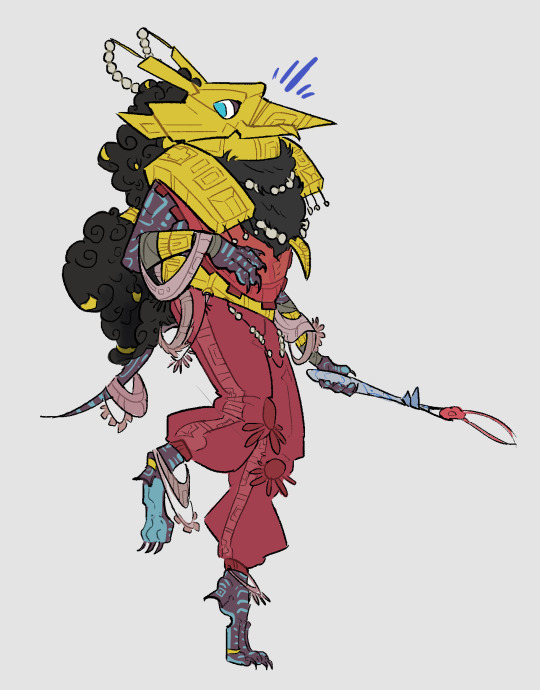
Four Jewels, Fleeting Notes (she/her) is an ancient that managed to survive past the times of global ascension, outliving her entire species. She is now taking refuge in her local iterator superstructure, performing various maintenance work for her kind’s creation. She is a highly nostalgic individual, with a very particular relationship with ascension and the Great Problem. There is more to learn about her on her toyhouse page, especially regarding her personality and appearance, but there is also a lot of secrets untold regarding her past life and the actions that brought her where she is now ;)
Although Jewels is the oc the blog is centered around (cause she is the one that i have developed the most) i also have some other little fellas who might appear in here, and u can submit asks to.
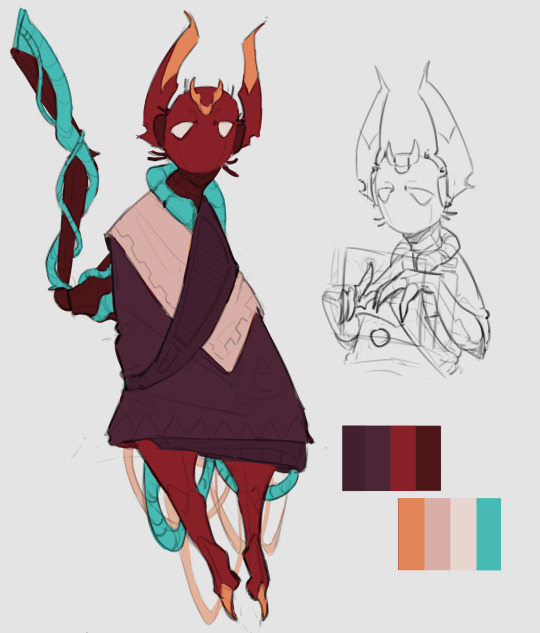
In Search of Abundance (he/xe) is the iterator in which Jewels is currently residing in and the one that took care of her city in the times before global ascension. He is what could be considered a low resource iterator, built with an older model by the standards of his time and with cut corners in regards to his capability for self maintenance and processing power. Due to a very important detail in his design, he was doomed to die much quicker without the help and maintenance of his citizens, thing that he tried to stop at all costs, to very much no avail. Thankfully, one faithful day, one of his old citizens decided to come back into his can...and give him a second chance.
Good luck getting this little grumpy fella to talk though, he doesn't enjoy strangers... nor talking.

A Golden Crown, Six Silver Coins (they/them) is an ancient that decided to ascend way before the times of global ascension, and even the rise of iterator. They were a mask maker, highly renowned on their field, where they made various masks and accessories for high ranking individuals and important Houses, feat which very few could achieve. They were also Jewel’s partner for a good chunk of her life, spending a long time together, even through various different lifetimes... until well, one day they uh, yknow...
// answering asks for this fella will be a little different, mostly because they are extremely dead by the time Jewels is around and answering asks herself, so if u wanna ask this fella some questions there will be a little jump back in the timeline, back to the golden times...

art by @/dieselpvnk Ever Burning Flame + white boy (they/it | he/him). Just an iterator and their emotional support scug, what else could u want. Flame misses their parents so bad it made a whole ass simulation so they could keep interacting with them. white boy likes to pelt people with rocks.
#tags that will be used throughout this blog (if i remember)#oc:jewels#oc:abundance#oc:crown#oc:flame#oc:white boy#info#art#writing#answered asks#yeah very original i know
84 notes
·
View notes
Text
The Work of Auditions

S.E.S Bada’s recruitment story is the stuff of SM legend. Personally scouted in 1996 by Lee Soo-man after he saw her perform at her school’s annual festival, she did not then dream of debuting as a pop singer, let alone being in a girl group. By most accounts, she wanted to be a musical theater actor. But she agreed to Lee’s offer because it literally paid the bills. In exchange for joining the company, Lee paid her full university tuition and expenses, where she studied theater.
I begin with Bada’s origin story, not only because it is unique among SM audition stories but because of what it says about SM. Specifically, it demonstrates the company’s recognition early on that acquiring the best performers, regardless of cost, was integral to their survival and success. They would need talent to grow their stable of new acts and replace any new acts that disbanded. Furthermore, maintaining a pool of potential replacement talent was an insurance policy. Their mere existence would apply downward pressure on their already debuted idols, discouraging them from agitating for more (or any) money or better contract terms or material conditions lest they be replaced.
But first, SM had to find trainees, which they did so using a multi-pronged strategy. Street-casting, like the kind that found Bada, was part of their approach, as was their affiliation with the for-profit training academy Starlight Academy beginning in 2003. There was also their more formalized Audition process, which they started advertising on their official website in 2000. In the early aughts, versions of this Audition section of their website listed three language options (“Korean” “English” and “Chinese”), with different options for each. In particular, the Korean version listed six options:
Mail: An applicant could send via snail mail a letter or postcard listing their name, school grade, and contact information, along with two photos, to the attention of the Entertainment Audition Manager at a Gangnam PO Box.
Email: An applicant could send an email to the casting director with all the information they would include in a letter to the casting director if they were mailing their application and two scanned photos.
Franchise Store: Instead of mailing or emailing their information and photos, an applicant could drop off a letter with their information and two photos at one of the various music or record stores around Korea that SM listed on their site. If an applicant who utilized this method was selected for an in-person audition but lived outside of Seoul, SM would pay 100% of their transportation costs.
Recommend a friend: A person could send all of the same information of a friend or family member they believe is talented in a letter or email. If that friend or family member signed a contract with SM, the person who referred them would receive a scholarship of 1 million won.
Live Auditions: Every Saturday at 3pm, SM Entertainment held in-person auditions at their headquarters.
Live Auditions: Applicants could apply for an audition via directions obtained by calling a phone number. If an applicant passed the first round of screening, they would be invited to attend the in-person auditions held on Sunday at 3pm.
Today, SM has not radically changed these options other than revamping them to reflect technological changes and expanding their in-person auditions. They eliminated the snail mail and franchise store options in favor of digital options, including applying via the SM website or direct message. In-person auditions are still held weekly at the SM Entertainment building but are supplemented by audition tours. Earlier this year, they announced their 2024 Global Audition, which consists of stops in Daegu, Busan, Daejeon, Wonju, Gwangju, and Jeju, as well as Thailand, Japan, the United States, and Canada.
Much as their audition methods have not drastically changed, only expanded, the same could be said for the motivation behind their auditions. The need for new trainees, especially as the industry has become increasingly competitive, and the necessity of maintaining that power dynamic that I discussed above all still applies, but I would also add a third reason. That is much as trainees function as a way to apply pressure to acts on an agency’s roster, so does the audition, with all its spectacle, do for trainees. Between the multiple dates and increasing amount of locations, often announced with much fanfare, there is a dual impression. The auditions are extremely competitive, with participants going up against not only those at that audition but also highly desirable and affirming, as evidenced by the turnout.
Yet even though a trainee may have made it through the gauntlet of auditions and been selected as a member of an elite club, they cannot rest. On the contrary, as a trainee, they will have to work harder than other trainees whom they are competing with to maintain their spot and for one of the scant opportunities to debut. Moreover, they cannot complain about their training or the conditions of it or even negotiate for better contract terms, lest they get replaced by any one of those other people auditioning and vying for their spot.
It is no wonder SM Entertainment has not developed a more efficient way to audition potential new trainees. The current system is the perfect tool, conveniently downplaying their role outside the selection process. If a group of trainees encourages existing acts to stay silent even in the face of poor working conditions, that is not because SM has explicitly pushed them to but as a consequence of the system. Similarly, if trainees who acutely feel the precariousness of their situation overwork themselves, that is their decision. No matter that these are the results of a system created by SM's choices, and thus are not immutable. As far as the industry cares it works, so why would they fix it?
12 notes
·
View notes
Text
"Biopics of massively famous musicians are rarely very good, often because they stumble at the question of whom exactly they’re being made for. Are you making a movie for the already initiated die-hard fans yearning to see the life and times of their hero reflected back at them in exacting detail? Or is your movie a welcome mat for novices, a breezy jukebox of greatest hits aimed at cultivating new generations of fans, goosing streaming tallies and catalog sales in the process? Most musician biopics never manage to resolve this tension, in part because they’re usually also serving a third master, namely the musician’s estate, which tends to hold its own, very specific ideas about on-screen depiction.
Bob Marley: One Love, the new movie about the late reggae superstar that’s produced by Marley’s widow, Rita, along with some of his children, is a biopic that does seem to know whom it’s for, which isn’t a point in its favor. The film is directed by Reinaldo Marcus Green (King Richard) and stars Kingsley Ben-Adir as Marley, who does his best with the role despite not really looking or sounding much like the real Marley. (Within the past four years Ben-Adir has played Malcolm X, Barack Obama, and Bob Marley, quite the triptych of historical figures.) Lashana Lynch plays Rita and steals the film in every scene she’s in, even if the movie’s script fails to elevate her character past the archetypical suffering-yet-supportive wife of a genius.
Rather than taking a cradle-to-grave approach to Marley’s life, One Love instead focuses on a single period of Marley’s career, his self-imposed exile to England in the aftermath of the 1976 attempt on his life at his home in Kingston, during which time he recorded Exodus, the 1977 LP that marked his full breakthrough into global superstardom. The film opens with the assassination attempt, after which we’re quickly whisked to London, where the film depicts Marley writing most of Exodus’ songs in a cloying series of “eureka!” moments that tend to populate movies of this kind. Snippets of Marley’s classic “Redemption Song” surface as a recurring musical motif in the film, and in one of the last scenes, we see Marley performing the song for his awestruck family in a sappy flourish that’s also anachronistic. (By most accounts, Marley didn’t write “Redemption Song” until 1979.) Periodically we’re treated to a series of flashbacks of the singer’s earlier life, a clichéd device that this movie could have used more of: Brief forays into Marley’s conversion to Rastafarianism are surprisingly well done, and a scene of a teenage Marley and the Wailing Wailers performing “Simmer Down” at Coxsone Dodd’s Studio One is the best moment in the film.
One Love is an inspirational tale about a Great Man who used music to unite the world, one that reduces one of the most consequential and complicated artists of the 20th century to a walking fount of genial aphorisms, the guy who suggested we all get together and feel all right. As such, the film indulges a decadeslong public appetite for a particular imagining of Marley that his estate now seems depressingly eager to feed. It’s been 42 years since Marley died of a rare form of melanoma at age 36, and I’m not sure there’s a musician who’s more literally iconic: Go to any commercial district in any part of the world and within minutes you’ll find an opportunity to buy something bearing Marley’s likeness. In the United States, Marley has been a staple of dorm-room walls for generations: The casual and underinformed co-optation of Marley by American bro culture has even inspired a recurring meme in which Marley’s name is erroneously affixed to an image of Jimi Hendrix.
To a certain brand of musical cynic, Marley has become the embodiment of a musician whom people own posters and T-shirts of but don’t actually listen to, which isn’t totally fair to most of the owners of those posters and T-shirts. Some of Marley’s music is still enormously popular: His 1984 greatest hits compilation Legend is currently enjoying its 820th week on the Billboard 200, a position it will likely maintain for the foreseeable future given One Love’s early, strikingly robust box-office projections. The only album that’s spent longer on the chart is Pink Floyd’s Dark Side of the Moon.
But in the pop-cultural imagination, Legend has completely eclipsed everything else Marley ever released. The album has sold more than 15 million copies in the United States alone, while no other Marley LP has sold even 1 million stateside. From a purely mathematical standpoint, this would indicate that for many fans, Legend is the first and only Marley album they’ll ever listen to. I’m not sure there’s another greatest hits compilation that has played such an outsize role in the public definition of an artist.
Legend is a fine little collection, but the idea that it’s some sort of one-stop synopsis of Marley’s career is absurd. For starters, 10 of its 14 tracks date from the period of 1977–80, a four-year time frame that represents the height of Marley’s global popularity but is a relatively minuscule cross section of a staggeringly prolific, nearly two-decade-long recording career. (Five of Exodus’ 10 tracks are included on Legend, which I suspect is one reason that One Love is so invested in the album’s significance.)
This period also coincides with a time when Marley’s music seemed to take a step back from revolutionary politics, a tack that may have been driven at least in part by the aforementioned assassination attempt. The Marley canonized on Legend is not the Marley who sang “I feel like bombin’ a church/ Now that you know that the preacher is lyin’ ” or who called for “burnin’ and a-lootin’ tonight … burnin’ all illusion tonight” or declared that “Rasta don’t work for no CIA.” The dominance of Legend in the U.S. is particularly striking when one considers that Marley’s highest-selling album in this country during his lifetime was 1976’s Rastaman Vibration, which peaked at No. 8 on the Billboard 200 and includes such overtly political tracks as “Crazy Baldhead,” “Rat Race,” and “War.” Legend doesn’t include a single track from Rastaman Vibration, instead opting for romantic fare like “Is This Love” and “Waiting in Vain” and feel-good anthems like “One Love/People Get Ready” and “Jamming.” (For an excellent deep dive into the history and legacy of Legend, I recommend this article from the Ringer earlier this week.)
One Day’s Director Has No Regrets About the Movie’s Controversial Ending
Legend’s preeminence has helped turn Marley into the musical equivalent of a tourist destination, at which One Love is just one more cozy attraction. This is worse than a shame, because the real Bob Marley was one of the most remarkable musical talents of the 20th century. As a songwriter, he was so prolific that music seemed to pour out of him, a quality that has sometimes led to a naturalization of his gifts that veers into exoticizing primitivism. (One Love certainly partakes in this.) But rather than being some carefree savant, Marley was a fiercely disciplined and ambitious artist from the very beginning. He wrote and recorded his first single, “Judge Not,” in 1962 at the age of 16, and it remains an astonishing debut, an effortlessly catchy melody sung by a voice that sounds both nervous and supremely confident in a way that only a teenager can manage.
By the time he signed to Island Records in 1972 and began his ascent to international superstardom, Marley had already written a lifetime’s worth of great songs. He had a preternatural ear for hooks and crafted songs that were ready-made hit records, three-minute gems of perfectly crystalized musical ideas. As a singer, his indelible tenor rasp and thrillingly improvisational style were the byproducts of an extraordinarily well-honed sense of intonation and time. And during the 1970s, he fronted what might have been the best band on the face of the earth, grounded in the peerless rhythm section of drummer Carlton Barrett and bassist Aston “Family Man” Barrett, the latter of whom died earlier this month at age 77. (Aston’s son and namesake, an accomplished musician in his own right, plays his father in the film.)
One Love doesn’t know how to begin exploring this artist and his art in any way that even begins to be interesting. Instead it just feeds back the same sanitized and saccharine idea of Bob Marley to the same audience who has been eating that up for generations. It’s a movie about a poster. Over the end credits of One Love, archival performance clips of Marley flash onto the screen, and for a few moments we’re treated to sounds and images that are infinitely more magnetic and thrillingly alive than anything we’ve seen over the preceding 100-ish minutes. That Bob Marley, and the extraordinary body of music he left behind, is still out there for those who go listening for it, but this movie isn’t where you’ll find him."


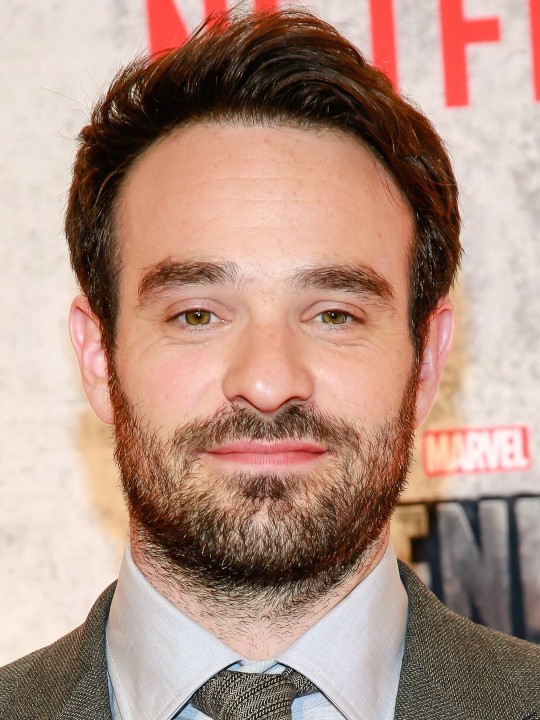



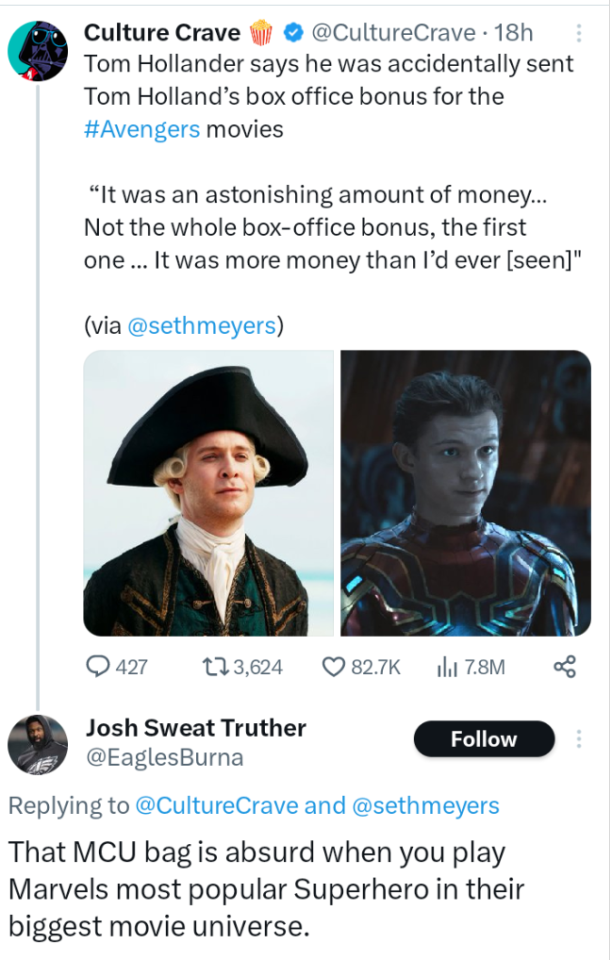



#Jamaica and The Legendary Marley Family Sell Patriarch Bob Marley Down The River For Weak Tepid White Washed One Love#Starring British Lavender Mafia Boy Kingsley Ben Adir#Irish Mob#Corrupt British Film Industry#British Thugs Allowed To Play Historic Black Figures#Malcolm X#Barack Obama#Hollywood Gay Mafia Connections#Scientology#Sony Pictures David Geffen#Warner Bros#David Zaslav#IAC#Barry Diller#Kingsley Ben Adir#David Oyelowo#Tom Hollander#Kristen Stewart#Elton John#Cillian Murphy#Stephen Fry#Mark Gatiss#Capote and The Swans Star Used In Threat Against Spiderman Star Tom Holland#British Parliament#BBC#ITV#Jamaica Compromised#Charlie Cox#Daredevil
7 notes
·
View notes
Text
DISNEY STUDIO AU: Powerline

Full Name: Kyle J. Macken
Other Names: Powerline (Stage name)
Occuaption(s): Singer, songwriter, dancer, record producer
Residence: Indiana, USA
Family: Mr. Macken (father), Mrs. Macken (mother), 8 siblings (unknown)
Relationships: George G. Goof (role model), Maxine Goof (fan)
Likes: Dancing, singing, social working, interacting with his fans/children, cartoons, Goofy’s shows/performances, Wings’ Winks/Glory B’s songs
Dislikes: Overwhelming schedules, paparazzis
Abilities/Talents: “Irreplaceable” singing and dancing, charisma, analyzing observation, 5 foreign languages
Kyle J. Macken, AKA “Powerline”, is a globally famous pop star. He is the idol/celebrity crush of Maxine Goof and majority of her peers, heavily regarded as one of the greatest musicians in genres pop, soul, R & B, rock, disco, dance-pop, techno, and so on. Other than his musical career, he engages in social works; most likely participating in social services to help the disabled and the orphans, occasionally donating as well. Currently, he is also a record producer of “Powerline Recordings”. Throughout, he has released total of 40 songs.
He was known for having his parents and 8 siblings. Being the youngest of working-class family, he was isolated and alone most of the time until he stumbled upon television channels showing the series and performances of Goofy. With Goofy as his role model and one of few that made his childhood happier, Kyle decided to pursue a career of entertainer/performer since then. Initially began as lounge/club performers, he was discovered by the recording agencies and was scouted to becoming a teen idol. His first song “GO - I’m Falling Out of Love” has become a hit, and has released more popular songs. Whenever he felt down, he would visit the broadcast channel to watch Goofy’s performances and shows, listening to songs of Wings’ Wink and its lead vocalist Glory B. At one point, he expressed his condolences when Glory B passed away. During Maxine and her friend PJ’s pre-teen years, Powerline has sang several openings and endings of popular cartoons/series as the two developed great admiration of his songs.
In Maxine’s teen years, Powerline has released his two songs “Stand Out” and “I 2 I” that has made simultaneous hits. Maxine listened to the song and realized her crush Rox shares common admiration for Powerline. With an idea, she decided to impress him by her performance of “Stand Out” for last day of school. During the process, she analyzed Powerline’s vocal structures of songs, choreography and stage manners before self-coaching and rehearsing as her two friends PJ and Barby would set the cameras and projector for the last day of school pep rally. The result lead to Maxine become increasingly popular when she performed “Stand Out” as later, Rox complimented her performance. In addition, Stanley was holding a party where she invites many students to watch Powerline’s concert live pay-per-view on TV. Although Maxine was thinking of going to the party with Rox, she was disappointed to learn of her dad already planed a week-long trip with her and Jr, losing a chance to be with Rox. On the other hand, Powerline was informed by his manager that in his concert at Los Angeles, California, he would perform with a guest star but didn’t tell exactly who. At Saturday evening where the concert took place, Powerline performs for wide scale of audiences but was briefly in state of surprise to see Goofy joining onstage in a middle of his song “I 2 I”, finally realizing he was the guest star dancing with. In addition, Goofy’s daughter joined along in a performance. Shortly after, Maxine and Jr had a chance to meet Powerline backstage by Goofy and the said singer’s manager, surprising both when hearing him actually a great fan of their father’s performances/series. As Goofy asked for his autograph in behalf of his daughter, Powerline delightfully accepted.
In the aftermath, Powerline watched the filmed video of Maxine’s “Stand Out” performance during the assembly uploaded in the social media, and was impressed of her singing voice and choreography. At the same time, he found her singing voice sharing uncanny resemblance with Glory B. Years later, in Maxine’s college years, it was revealed he had founded his recording company “Powerline Recordings” and has been looking for potentials with great talents. He was seen looking at Maxine’s videos of song covers and choreography with interest.
#Goof Troop#Goof Troop AU#A Goofy Movie#A Goofy Movie AU#An Extremely Goofy Movie#An Extremely Goofy Movie AU#Powerline#Disney Studio AU
30 notes
·
View notes
Text
Professional Website Hosting and Management Services
In today’s digital age, having a strong online presence is crucial for any business or organization. A well-designed website serves as a virtual storefront, allowing you to reach a global audience and showcase your products, services, or ideas. However, creating and maintaining a website requires technical expertise, time, and resources that not everyone possesses. That’s where professional website hosting and management services come into play.

What is Website Hosting?
Website hosting refers to the process of storing your website files on a server that is connected to the internet. When someone types your website’s domain name into their browser, their device connects to the server, retrieves the website files, and displays the webpages. Website hosting is a critical component of your online presence, as it ensures your website is accessible to visitors at all times.
The Benefits of Professional Website Hosting and Management Services
While it is possible to host a website on your own, opting for professional website hosting and management services offers numerous advantages. Let’s explore some of the key benefits:
1. Reliability and Uptime:
Professional hosting providers offer reliable and secure servers, ensuring that your website is accessible to visitors around the clock. They have redundant systems in place to minimize downtime and address any technical issues promptly. This ensures a seamless browsing experience for your users, enhancing their trust and satisfaction.
2. Technical Support:
Managing a website involves dealing with technical challenges such as server configuration, software updates, and security patches. With professional hosting services, you have access to a dedicated support team that can assist you with any technical issues that arise. This allows you to focus on your core business activities while leaving the technical aspects to the experts.
3. Scalability:
As your business grows, so does the traffic to your website. Professional hosting providers offer scalable solutions that can accommodate increased traffic and ensure optimal performance. They have the infrastructure and resources to handle high volumes of visitors, preventing your website from becoming slow or unresponsive.
4. Enhanced Security:
Website security is of paramount importance, especially in an era of increasing cyber threats. Professional hosting services implement robust security measures, including firewalls, malware scanning, and regular backups, to protect your website and its data. They stay updated with the latest security protocols and continuously monitor for any potential vulnerabilities.
5. Additional Services:
Many professional hosting providers offer a range of additional services to enhance your website’s functionality and performance. These may include content delivery networks (CDNs) to improve page load speeds, SSL certificates for secure data transmission, and automatic backups to safeguard your data in case of unforeseen events.
Choosing the Right Professional Hosting Provider
With numerous hosting providers available, selecting the right one for your specific needs can be daunting. Here are some factors to consider when choosing a professional hosting provider:
1. Reliability and Uptime Guarantee:
Ensure that the hosting provider has a proven track record of reliability and offers an uptime guarantee of at least 99%. You don’t want your website to be inaccessible due to server issues or maintenance downtime.
2. Scalability Options:
Consider the scalability options offered by the hosting provider. Can they accommodate your website’s growth and handle sudden traffic spikes? A flexible hosting solution is crucial to ensure your website performs well under varying loads.
3. Security Measures:
Check the security measures implemented by the hosting provider. Are they proactive in addressing security threats? Do they offer SSL certificates, regular backups, and malware scanning? Robust security measures are essential to protect your website and sensitive data.
4. Technical Support:
Ensure that the hosting provider offers reliable and responsive technical support. Look for providers that offer 24/7 support through various channels like live chat, email, or phone. Quick assistance during emergencies can save you valuable time and prevent potential losses.
5. Pricing and Value for Money:
While cost shouldn’t be the sole deciding factor, it’s important to compare pricing plans and determine the value for money offered by different hosting providers. Consider the features, performance, and support you receive for the price you pay.
Conclusion
Professional website hosting and management services provide businesses and organizations with a reliable, secure, and scalable online infrastructure. By outsourcing the technical aspects of website management, you can focus on your core activities while ensuring an optimal user experience for your website visitors. Choosing the right hosting provider is crucial to unlock the benefits of professional website hosting and maximize your online presence.
Investing in professional hosting services is a wise decision for any business or organization that values their online presence. It allows you to leverage the expertise and infrastructure of a dedicated team while ensuring your website remains accessible, secure, and performs at its best. Don’t underestimate the impact that a well-hosted and managed website can have on your brand, customer satisfaction, and business success.

Source
#WebManagement#ServerHosting#WebsiteMaintenance#TechSupport#CloudHosting#DataCenter#ServerManagement#WebHosting#ITInfrastructure#WebsiteSecurity#ServerAdmin#HostingSolutions#WebsitePerformance#ServerMonitoring#WebDevelopment#CloudComputing#NetworkSecurity#DomainRegistration#BackupandRecovery#Cybersecurity
22 notes
·
View notes
Text
Tamagotchi Uni Uses AWS, Amazon Web Services

The Tamagotchi Uni is the first Tamagotchi to ever connect to Wi-Fi, which enables it to receive over the area updates, programing changes, and more. How exactly is this all being done by Bandai Japan? Well Bandai has built the Tamagotchi Uni on the Amazon Web Services platform (AWS).
The details of this are actually outlined on a recent article on the Amazon Web Services blog. The blog post provided a detailed view on how Tamagotchi Uni use AWS to achieve secure and reliable connectivity and quickly deliver new content updates without leaving customers waiting.It details that Bandai Co., Ltd., the company responsible for product development and sales, adopted AWS IoT to realize the concept of globally interconnected Tamagotchi, enabling users to interact with each other.

Bandai partnered with their cloud development partner, Phoenisys, Inc., to connect and manage million of Tamagotchi devices. One of the critical features was the over the air software updates which uses the jobs feature of AWS IoT Device Management to distribute the latest firmware across all Tamagotchi devices without causing any delays to customers.
To make Tamagotchi Uni IoT-enabled, Bandai establish the three key goals, which was implementing secure connections, scaling the load-balancing resources to accommodate over 1 million connections worldwide, and optimizing operational costs. The article even features the AWS architecture for the Tamagotchi Uni, which is interesting.

AWS IoT Core is used to manage the state of each Tamagotchi Uni device, which helps retrieve distributed items and content. AWS IoT Device Management is used to index the extensive Tamagotchi Uni fleet and create dynamic groups on the state of each device, facilitating efficient over-the-air (OTA) updates. FreeRTOS is used to minimize the amount of resources and code required to implement device-to-cloud communication for efficient system development. AWS Lambda is used to process tasks, delivering new announcements, and registering assets. Amazon DynamoDB is used as a fully managed, sever less, key-value noSQL database that runs high-performance applications at any scale. Amazon Simple Storage Service (Amazon S3) is used for object storage service, each of these data stores are used to manage the various resources within Tamagotchi Uni. Lastly, Amazon Timestream is used to accumulate historical data of user’s actions like downloading items and additional content.
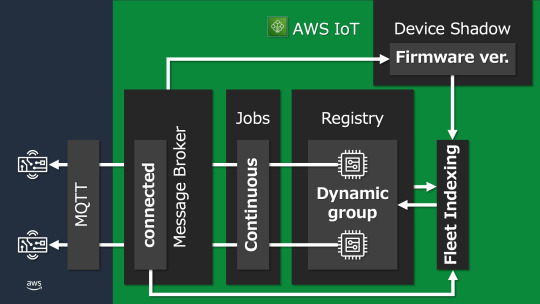
The article also details how Bandai is handling large scale firmware updates to Tamagotchi Uni devices which are executed at a rate of 1,000 units per hour which would have resulted in a delay for some devices. The team actually designed job delivery as a continuous job which automatically updates the devices under certain conditions. This is using fleet indexing that runs a query to see which devices meet the criteria for the update to be pushed out to it.
Lastly the article details how Bandai conducted system performance testing at a large-scale to emulate what it would be like after the device was released. They verified the smooth operation and performance of updates through their testing.
Be sure to check out the full article here on the Amazon AWS blog.
#tamapalace#tamagotchi#tmgc#tamagotchiuni#tamagotchi uni#uni#tamatag#virtualpet#bandai#amazonaws#amazon aws#aws#amazonwebservices#amazon web services#blog
14 notes
·
View notes